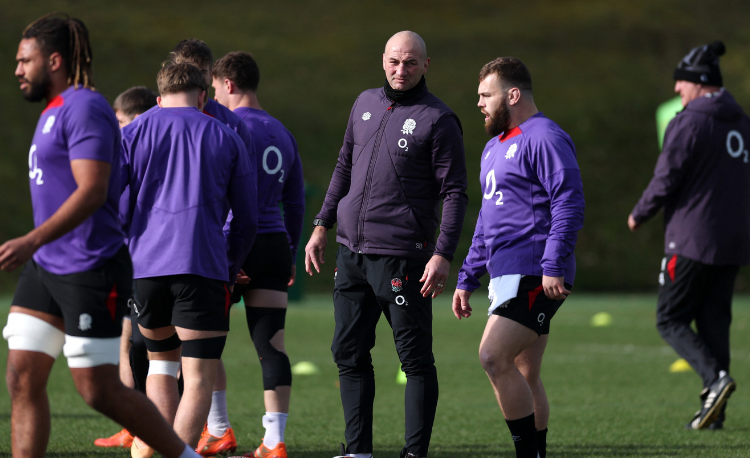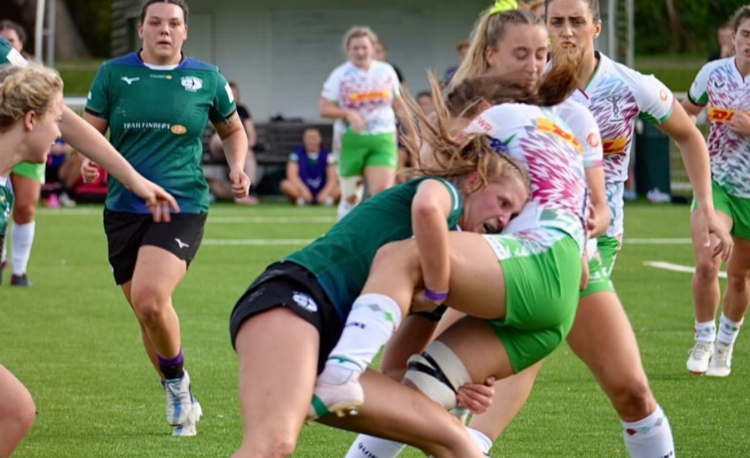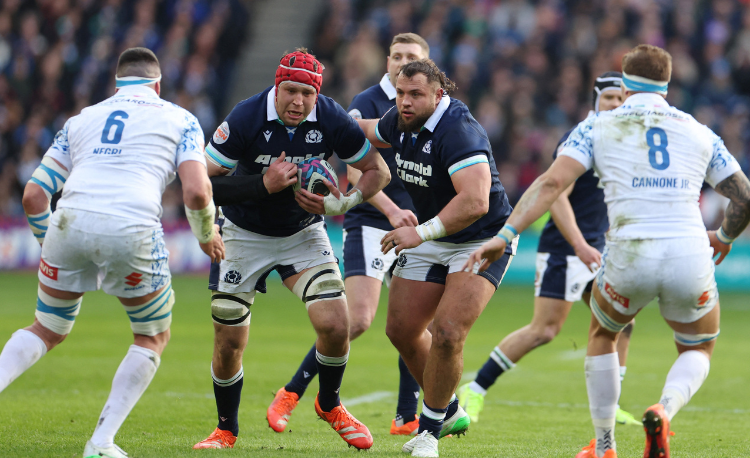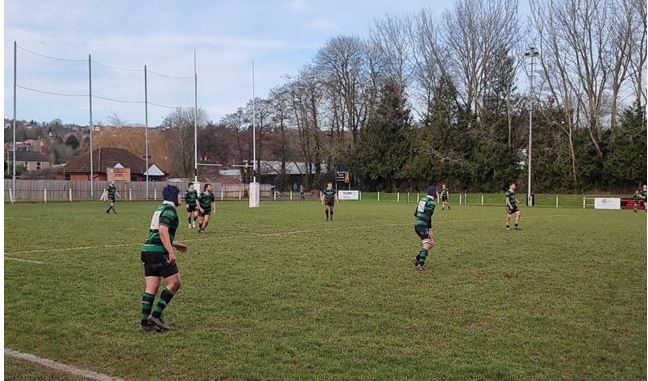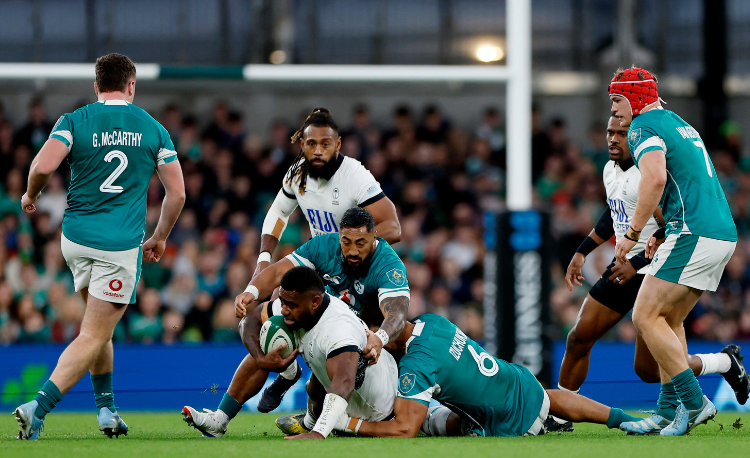Law trials 2022: Time!

Ian Diddams reviews the possible consequences of the current law trials being looked at in the Queensland Challenger series. In this article, he focuses on the experiments around speeding up the game.
World Rugby has announced some law trials to be trialled in Australia in the next few months in a specific competition, the Queensland Challenger series.
Whilst initially, these trials will be used at a professional level, it could be that, if successful, they will make it into the full laws, so what may the effects be for the community game if that were to happen?
There are four areas these trials affect – time compliance, scrums, lineouts, and knock-ons in defence. Over the course of three articles, we will look more deeply at each area.
TIME
There are four areas where "time" is going to be looked at more carefully.
THE TRIALS FOR TIME
- Five seconds to exit the ruck after referee calls to 'use it'
- 30 seconds to pack scrum from when mark is set
- 60 seconds to take penalty kicks, 90 seconds for conversions, 30 seconds to restart after a conversion
- 30 seconds to throw lineout from when mark is set
Some of these trials do not change the existing law requirements (ruck clearance, kicks at goal). What has changed here is the penalty for infringements – these will now be penalised by a tap-only free kick. This means there will be no option for a scrum alternative. Sides then will need to consider their options depending on where that tap may be awarded on the pitch.
Caveat: Regarding the kicks mentioned above, it is not yet clear whether tapped free kick awards can be kicked fully, but if not, a tap followed by a kick would still achieve the same result. And of course, coming from a free kick, any uninterrupted touch clearance will hand the subsequent lineout throw to the opposition.
These trials reduce “dead time” during matches when the clock is still running but play is to restart. It reduces the opportunity to run the clock down by sides with a lead.
One issue that may arise in the community game that the professionals don’t have when considering these time constraints is the availability of a ball. Enclosed stadiums and ball boys may prompt a speedy return of a ball to the pitch.
However. the community game has challenges, such as rivers and canals, livestock and fenced fields, busy roads, and housing estates adjacent to the pitch. We can only hope that provision would be available for such eventualities, so sides don’t lose out purely because somebody must climb a tree to retrieve the ball!
TAP-PENALTY PLAYS
Let's consider four examples and the sort of options that may be available – these of course may depend on a team’s abilities or the state of the game.
The focus is what the team wants to achieve from their tap-penalty play.
In your own 22
Priority will likely be to clear the ball to gain territory. The two clear options here are
1. To clear to touch and concede the lineout.
2. To kick long, concede possession and contest further upfield.
The former is direct to touch or to use a bouncing rolling touch finder. The latter may gain more territory but will rely on the space exposed by the opposition.
The closer the team is to their own try line, the safer the direct kick is.
A further option here may be a tap and run with the forwards through a few rucks to bring the eventual kick closer to the 22m line. Sides with effective exit strategies already may find this option quite standard and safe..
Between the 22m
The obvious options here are placing the opposition under pressure, for them to make mistakes and turn the ball over.
Kicking directly to touch is now not an option, but a deep-rolling touch-finder could gain significant territory, placing huge pressure on the opponents near their own try line.
A real pressure option would be a high kick to get runners underneath the point of landing, either to challenge for the ball as it lands or put the catcher under pressure.
Normally a kick close to the touchline also offers options of driving a catcher into touch for the resultant lineout or minimises the distance a subsequent clearing kick may make.
However, centre-field kicks may be a strong option if the weather is in the kicking team's favour, for example, bright sunshine or headwinds making clearing difficult.
Or, if the opposition has weak kickers, and at younger youth levels, this is a real likelihood, then long kicks that stay in-field are a powerful option.
In their 22
Possession is key now in this area of the field with a view to scoring. So, plays here would focus on retaining the ball and using the team's strengths.
If the forwards are on top, use a tap and go, even setting up mauls. If the backs are proving incisive, then a backline moves to test the defence under pressure.
Between the 22m and from a lineout
In particular, in this area of the pitch, tap penalty awards from lineouts provide specific opportunities because the free-kick mark will provide a fairly narrow blind-side and a wide open-side.
The forwards may make good use of the narrower side whilst maintaining the exposed width for a backline attack, whilst a backline attack may be able to expose wider gaps between defenders.
In the next article, we will look at the impact of the scrummage law trials.
Until then – always keep a spare ball on the touchline and consider your tapped free-kick options!
LINK TO ARTICLES ON LAW TRIALS
SCRUMS
9 POSITIONING
Related Files
Newsletter Sign Up
Coaches Testimonials

Gerald Kearney, Downtown Las Vegas Soccer Club

Paul Butler, Florida, USA

Rick Shields, Springboro, USA

Tony Green, Pierrefonds Titans, Quebec, Canada
Subscribe Today
Be a more effective, more successful rugby coach
In a recent survey 89% of subscribers said Rugby Coach Weekly makes them more confident, 91% said Rugby Coach Weekly makes them a more effective coach and 93% said Rugby Coach Weekly makes them more inspired.
Get Weekly Inspiration
All the latest techniques and approaches
Rugby Coach Weekly offers proven and easy to use rugby drills, coaching sessions, practice plans, small-sided games, warm-ups, training tips and advice.
We've been at the cutting edge of rugby coaching since we launched in 2005, creating resources for the grassroots youth coach, following best practice from around the world and insights from the professional game.



